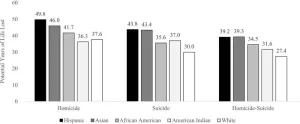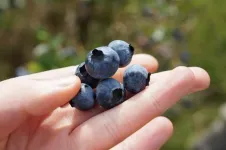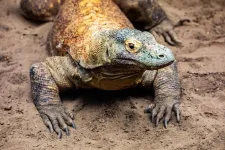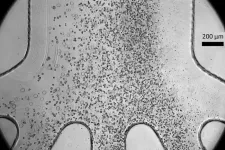(Press-News.org) (Santa Barbara, Calif.) — As climate change affects the oceans, coastal communities, particularly those at the front lines of ocean warming and sea level rise, are facing pressures that could threaten their access to aquatic foods.
“Climate change and other economic shocks are impacting how people access seafood, and typically households that are most reliant on seafood, such as those in Pacific Island countries, are most at risk,” said Jacob Eurich, a research associate at UC Santa Barbara’s Marine Science Institute, and a fisheries scientist at the Environmental Defense Fund. Which is why, he added, it is necessary to increase food system resilience in the area, which entails, among other things, the ability to maintain high levels of seafood consumption.
Fortunately, local strategies for doing so may already exist. In a study that appears in the Proceedings of the National Academy of Sciences, Eurich, UC Santa Cruz environmental studies Assistant Professor Katherine Seto and an international cohort of researchers assert that understanding and reinforcing the pathways through which individuals and households in these communities currently access nutritious food — as opposed to building new technologies and implementing new processes — is one way to effectively adapt to emerging environmental and economic changes.
Case in point: Kiribati, an island nation in the Pacific Ocean. Highly reliant on aquatic food from its waters, the local population is also faced with social forces such as the importation of food from abroad, as well as the biophysical forces of climate change. Food system resilience here requires good and consistent access to local seafood.
“We wanted to better understand how households benefit, or fail to benefit from seafood resources, because we think it’s something we often assume, and are rarely able to really explore,” said Seto, the study’s lead author.
To do so, the research team utilized the concept of access theory, which follows the flow of benefits (in this case high-quality nutrition) as the food makes its way from the ocean to the table. Rather than using the community’s proximity to seafood as a representation for their ability to gain nutrition, they traced the actual pathways by which I-Kiribati acquired seafood. Households with high seafood consumption were of particular interest to the researchers, to see what strategies they employed to gain access to seafood.
“We measured actual consumptive benefits from eating seafood, and the results about who benefits more and who benefits less are not as intuitive as you’d think,” Seto explained.
“Thanks to the large dataset and machine learning algorithm, we were able to identify the importance of different variables from nested and interacting relationships and understand the distinct household strategies for ensuring benefit from seafood resources,” said co-author Whitney Friedman of UC Santa Cruz.
Indeed, the results showed that access to seafood markets was the key mechanism mediating seafood access in Kiribati, outpacing other drivers such as occupation, education, capital and technology.
“Market access is important for policy moving forward,” Eurich said. “Specifically, ensuring equitable access to markets is key.”
As they followed the seafood, the researchers noted a somewhat hidden pattern as well, something that would not have been obvious from a more conventional food system analysis.
“We were surprised to see that high seafood consumption households tended not to use formal markets and cash-based means and instead relied on home production and bartering for seafood acquisition,” Eurich said.
While households in general used combinations of strategies to acquire seafood, the highest seafood consumers tended to use the market the least. These populations included giftees in urban areas, pointing to the social, non-market aspect of seafood acquisition, as well as members of the community that did their own fishing and gleaning and also used the catch to trade, bypassing the market. The high consumers that used the market the most belonged in the smallest group, consisting of wealthy, affluent and urban households.
“From a policy perspective, promoting social networks through things like fisher groups or cooperatives could reinforce healthy seafood diets in addition to the commonly proposed food system interventions, including addressing supply chain inefficiencies,” Eurich said.
The results of the study also revealed a distinct pattern of consumption — different households ate different seafoods. “This means that household strategies are not only important in shaping the overall consumptive benefit a household gets from seafood,” Seto said, “but also the potential environment, food security and nutritional implications, as all seafoods are not the same.”
END
Reinforcing the diverse ways people access seafood can ensure healthy communities in the face of change
2024-02-07
ELSE PRESS RELEASES FROM THIS DATE:
Non-white victims of lethal violence and suicide in the US die significantly younger than their white counterparts
2024-02-07
In the US, people of color who are killed by violence or die by suicide lose more potential years of life than white victims, according to a new study, which also explored factors that may contribute to these disparities. Gregory Zimmerman of Northeastern University in Boston, US, and colleagues present these findings in the open-access journal PLOS ONE on February 7, 2024.
Mounting evidence suggests that, among victims of violence in the US, the average number of potential years of life lost—how much longer the victim would have lived if they survived—is greater for people of color than for white people.
To deepen understanding, Zimmerman ...
Almost 1 in 5 Indian adults aged 60+ show signs of mild neurocognitive disorder, according to nationally representative data - more than previously recognized
2024-02-07
Almost 1 in 5 Indian adults aged 60+ show signs of mild neurocognitive disorder, according to nationally representative data - more than previously recognized
###
Article URL: https://journals.plos.org/plosone/article?id=10.1371/journal.pone.0297220
Article Title: Prevalence of DSM-5 mild and major neurocognitive disorder in India: Results from the LASI-DAD
Author Countries: USA, UK, India
Funding: This work was supported by the National Institute on Aging (R01 AG051125 (JL), R01 AG030153 (JL), U01 AG064948 (JL), R01 AG070953 (ALG)). The funders had no role in study design, ...
More biodiverse nature landscapes may better buffer against stress - but only if you notice the difference, per experiment using videos of urban woodland
2024-02-07
More biodiverse nature landscapes may better buffer against stress - but only if you notice the difference, per experiment using videos of urban woodland
###
Article URL: https://journals.plos.org/plosone/article?id=10.1371/journal.pone.0297179
Article Title: Does increasing biodiversity in an urban woodland setting promote positive emotional responses in humans? A stress recovery experiment using 360-degree videos of an urban woodland
Author Countries: UK
Funding: SF received a PhD Studentship funding from the UKRI Economic and Social Research Council, ...
UK austerity politics correlated with increased frailty in the oldest adults
2024-02-07
The period of austerity politics from 2012 to 2018 was associated with steeper increases in frailty with age compared to pre-austerity between 2002 and 2010, according to a new study published February 7th in the open-access journal PLOS ONE by Carys Pugh of the University of Edinburgh, UK, and colleagues.
Previous research has linked a stalling in life expectancy growth to austerity politics implemented in response to the 2008-2009 financial crisis. However, the mechanism through which public spending cuts are associated with decreased life expectancy ...
Psychology study unearths ways to bolster global climate awareness and climate action
2024-02-07
An international team of scientists has created a tool that can aid in increasing climate awareness and climate action globally by highlighting messaging themes shown to be effective through experimental research.
The web-based tool, and the methods undergirding its creation, appears in the journal Science Advances.
The tool stems from a study involving nearly 250 researchers that drew more than 59,000 participants from 63 countries, including Algeria, China, Denmark, Germany, Israel, Japan, New Zealand, Peru, and the United States.
“We ...
Scientists reveal why blueberries are blue
2024-02-07
Tiny external structures in the wax coating of blueberries give them their blue colour, researchers at the University of Bristol can reveal.
This applies to lots of fruits that are the same colour including damsons, sloes and juniper berries.
In the study, published today in Science Advances, researchers show why blueberries are blue despite the dark red colour of the pigments in the fruit skin. Their blue colour is instead provided by a layer of wax that surrounds the fruit which is made up of miniature structures that scatter blue and UV light. This gives blueberries their blue appearance to humans and blue-UV to birds. The chromatic blue-UV reflectance ...
McMaster and ALK researchers discover new cell that remembers allergies
2024-02-07
Researchers with McMaster University and Denmark-based pharmaceutical company ALK-Abello A/S have made a groundbreaking discovery: a new cell that remembers allergies.
The discovery gives scientists and researchers a new target in treating allergies and could lead to new therapeutics. The research, published in Science Translational Medicine on Feb. 7, 2024, coins the brand-new cell as a type-2 memory B cell (MBC2).
“We’ve discovered a type of memory B cell that had unique characteristics and a unique gene ...
England’s oldest became frailer during austerity, study suggests
2024-02-07
The speed at which England’s oldest adults became frailer accelerated during the UK Government’s era of austerity politics, according to a new study.
Researchers say that the rate of frailty in people aged 85 and over in England increased 50 per cent faster per year between 2012 and 2018 compared with the preceding eight years.
The impact of frailty – a decline in a person’s mental and physical resilience to illness and injury – on the oldest in society must be considered should any new austerity measures be introduced, experts warn.
The study, led by researchers from the University of Edinburgh’s ...
Exceptionally rapid tooth development and ontogenetic changes in the feeding apparatus of the Komodo dragon
2024-02-07
Tea Maho and Robert R. Reisz
University of Toronto Mississauga
Kilat, the largest living lizard at the Toronto Metro Zoo, like other members of his species (Varanus komodoensis), truly deserves to be called the Komodo Dragon! Its impressive size and the way it looks at you and tracks your every move makes you realize that it is an apex predator, not unlike a ferocious theropod dinosaur. So, it is not surprising when you look around at his enclosure to find that there are shed teeth sparkling on the ground, a common find when ...
Scientists develop a low-cost device to make cell therapy safer
2024-02-07
CAMBRIDGE, MA – A tiny device built by scientists at MIT and the Singapore-MIT Alliance for Research and Technology could be used to improve the safety and effectiveness of cell therapy treatments for patients suffering from spinal cord injuries.
In cell therapy, clinicians create what are known as induced pluripotent stem cells by reprogramming some skin or blood cells taken from a patient. To treat a spinal cord injury, they would coax these pluripotent stem cells to become progenitor cells, which are destined to differentiate into spinal cord cells. These progenitors are then transplanted back into ...









